This article will delve into the impact of the attack on Aave, Ethena, and USDe, analyze how the DeFi system responds to this event, and explore whether Proof of Reserves can prevent liquidations exceeding $20 million.
Written by: Omer Goldberg, Founder of Chaos Labs
Translated by: Yuliya, PANews
After Bybit suffered a $1.4 billion hack, the cryptocurrency market faced severe shocks. How DeFi (decentralized finance) platforms respond to this largest hack in history, along with potential contagion risks and USDe price fluctuations, has become the focus of attention in the crypto space. This article will delve into the impact of the attack on Aave, Ethena, and USDe, analyze how the DeFi system responds to this event, and explore whether Proof of Reserves can prevent liquidations exceeding $20 million.
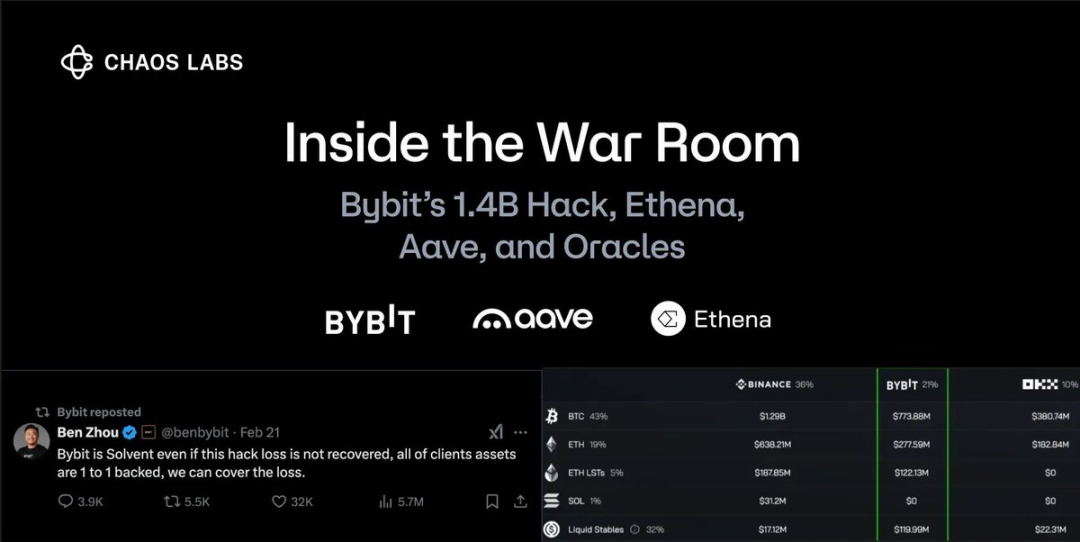
Following the attack, the Chaos Labs team, along with bgdlabs, AaveChan, and LlamaRisk, formed an emergency task force to assess the risks Aave might face and the systemic risks involved.
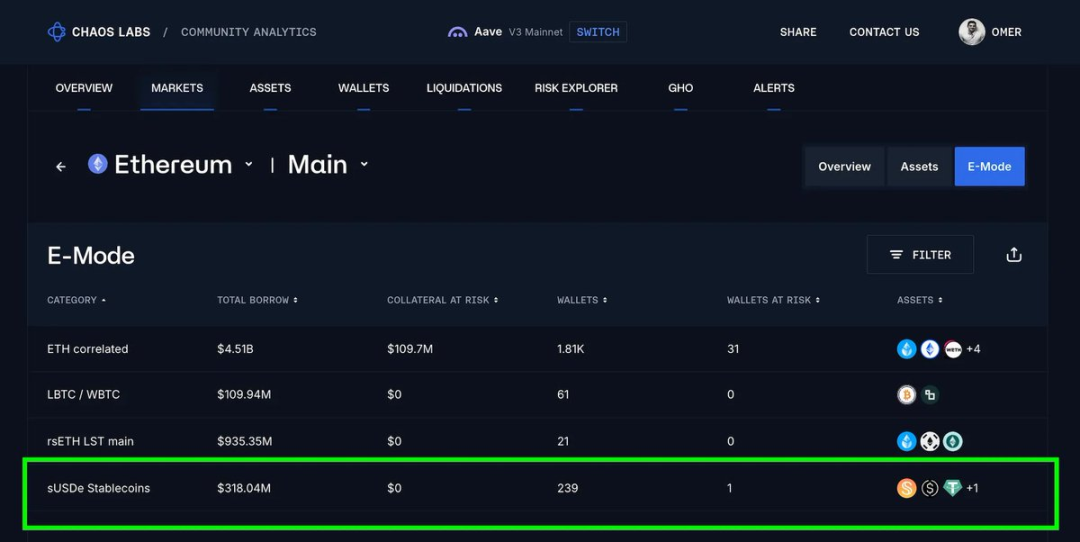
The emergency task force focused on several core issues: Bybit's solvency status, the possibility of larger-scale attacks, and the potential impact of any bankruptcy or write-down on Aave, considering the exposure to sUSDe.
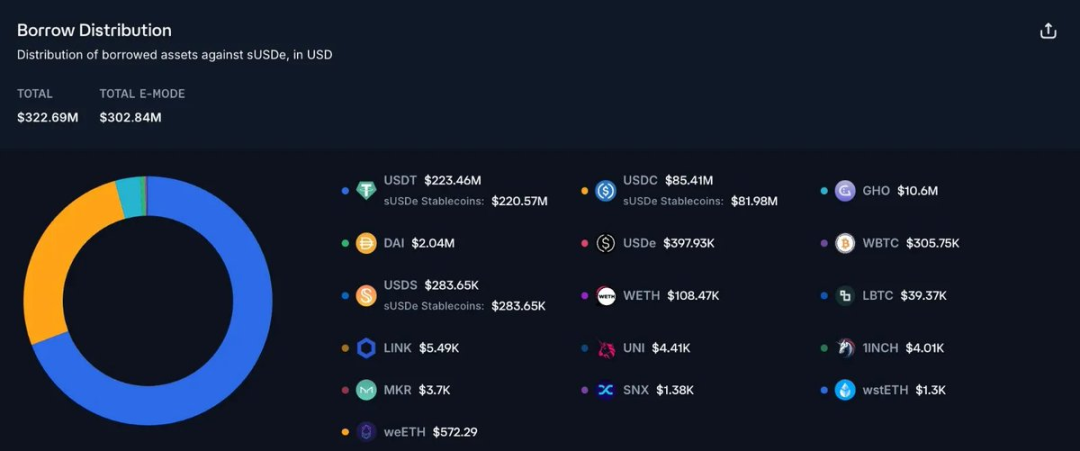
Ethena Labs confirmed that its funds are custodied through Copper.co, but the market remains concerned about the chain reaction that Bybit's inability to fulfill profits and losses might cause, as well as whether USDe would face deeper decoupling risks.
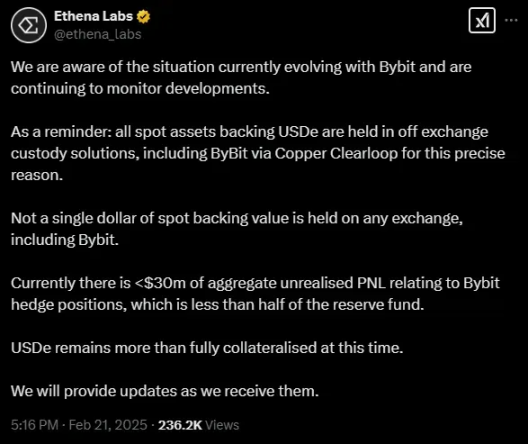
Analysis of Bybit's bankruptcy risk reveals three main areas of concern: exposure risk due to USDe hedge failure, chain liquidation risk triggered by ETH price drops, and potential DeFi contagion risk.
This prompted stakeholders to accurately quantify losses to decide whether to take measures such as freezing the sUSDe market. The transparency dashboard shows Ethena's ETH configuration on Bybit, while Ethena Labs' collateral is securely stored off-chain at Copper.co. This custodial solution and off-chain settlement mechanism effectively shielded Ethena and USDe from bankruptcy risks similar to those of the FTX exchange.
Assuming that the $400 million "on-paper" nominal ETH position cannot be closed, and that ETH prices drop by 25% before Copper.co releases funds, Ethena could face $100 million in unhedged losses. However, considering the $60 million insurance fund, the total support loss for USDe is expected to be only 0.5%.
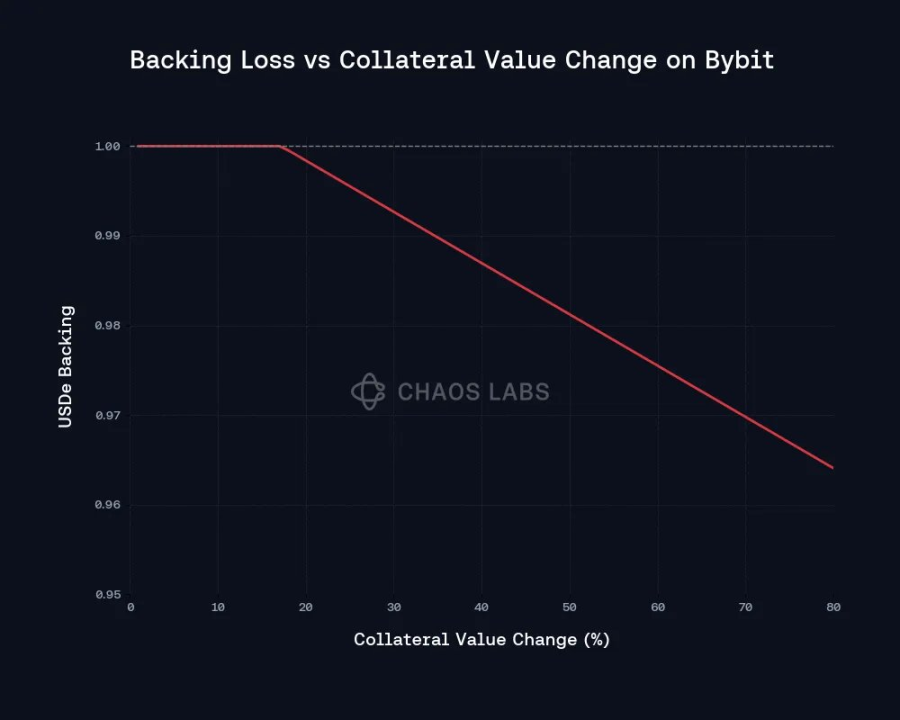
Based on the judgment that risks are relatively controllable, Aave prepared a risk response plan and continues to monitor the situation.
In terms of pricing, USDe exhibited significant price discrepancies across different trading venues. On the Bybit platform, due to panic selling and a lack of immediate arbitrage, USDe/USDT briefly fell to $0.96.
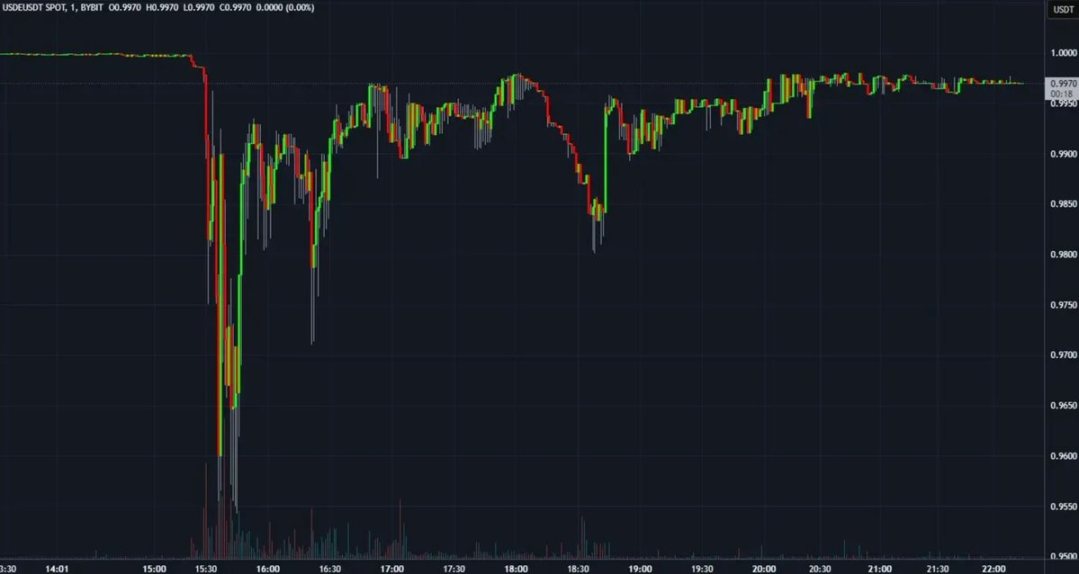
In contrast, on-chain pricing remained more stable, with only a brief decoupling to $0.994, which quickly recovered through arbitrage. This difference primarily stems from the redemption mechanism and the role of oracles.
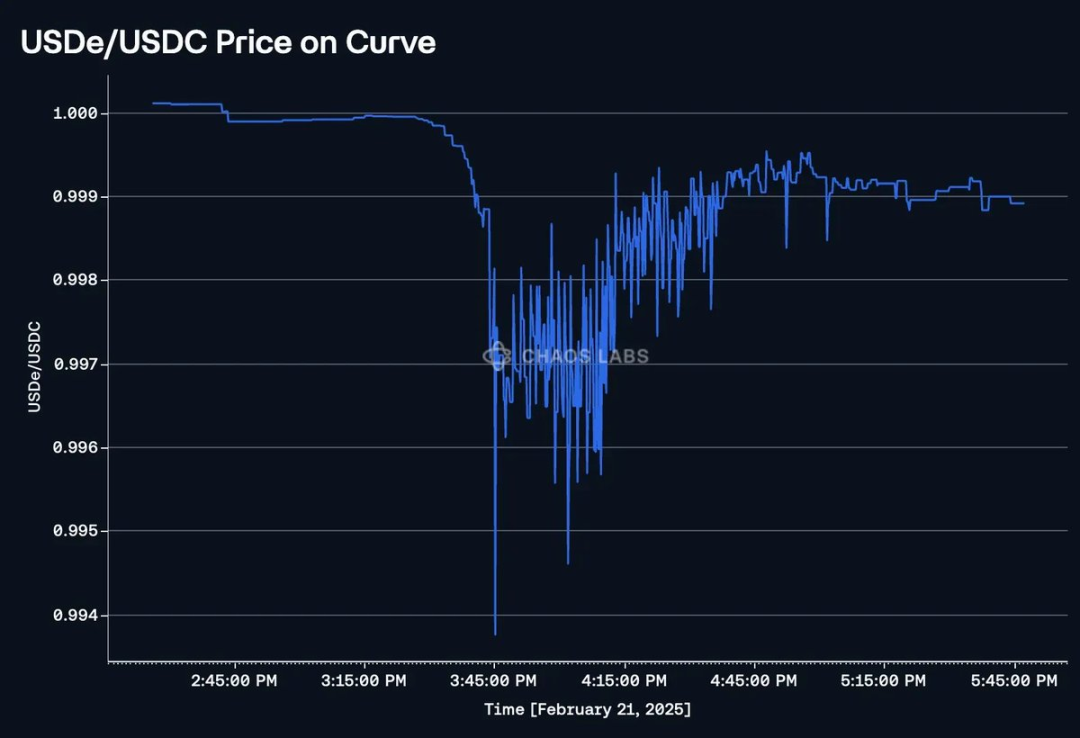
Unlike CeFi, USDe's redemption can be continuously and atomically conducted on-chain through the Mint and Redeem contract. The on-chain redemption mechanism for USDe operated smoothly, completing $117 million in redemptions within hours. Ethena Labs also raised the redemption buffer to $250 million and maintained price stability through continuous replenishment until USDe regained its peg. Due to the atomic nature of USDe redemptions, whitelisted redeemers quickly bridged the price gap on Curve.

However, anomalies in the oracle amplified market risks. Chainlink's USDe/USD price oracle deviated from the on-chain price, dropping to $0.977, even though the redemption mechanism was still functioning normally.
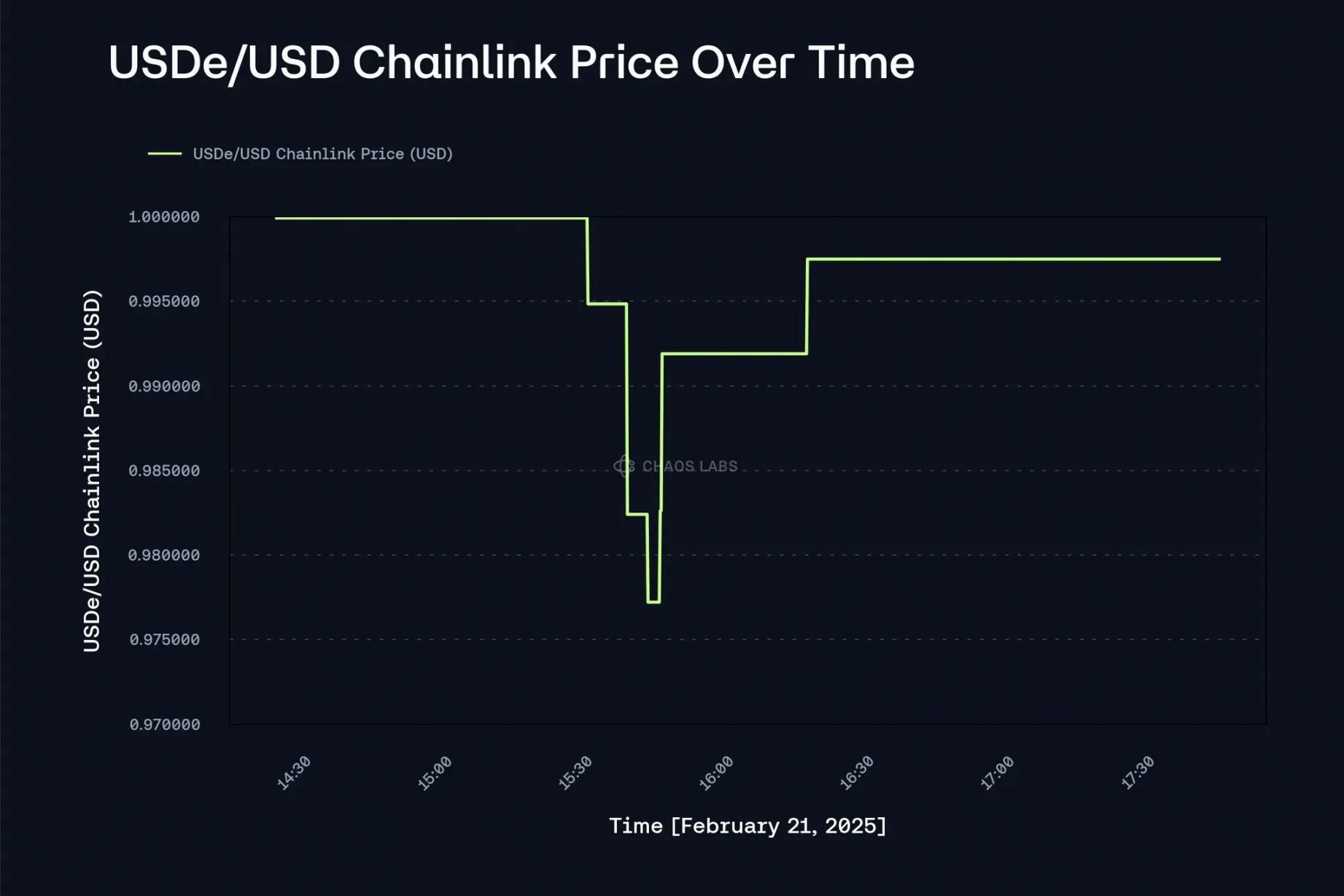
This deviation led to $22 million in liquidations on Aave, as traders were liquidated due to secondary market price fluctuations, despite their USDe assets being well-collateralized.

This highlights the room for improvement in the oracle mechanism; an integrated smart data source with Proof of Reserves could provide a more accurate valuation of USDe, avoiding unnecessary liquidations. This should consider real-time redemptions rather than relying solely on the weighted average trading price. Such a smart oracle could:
- Prevent unnecessary liquidations;
- Maintain capital efficiency;
- Reduce market pressure.
Where can improvements be made?
Risk, price, and Proof of Reserves data must work in synergy rather than exist in isolation to ensure value and maintain the resilience of the DeFi system under pressure. Price oracles should reflect the true collateral support rather than just secondary market prices.
Overall, the DeFi ecosystem has withstood this stress test. The Bybit team stabilized the market through transparent communication, the Ethena Labs team quickly eliminated risk exposure, ensuring smooth redemptions, while Aave effectively controlled risks without generating bad debts.
This incident indicates that to build a more resilient system, the industry needs smarter oracles and risk-aware infrastructure, enhancing capital efficiency while ensuring safety. The arrival of the next major stress test is merely a matter of time, and the industry needs to prepare in advance.
免责声明:本文章仅代表作者个人观点,不代表本平台的立场和观点。本文章仅供信息分享,不构成对任何人的任何投资建议。用户与作者之间的任何争议,与本平台无关。如网页中刊载的文章或图片涉及侵权,请提供相关的权利证明和身份证明发送邮件到support@aicoin.com,本平台相关工作人员将会进行核查。




